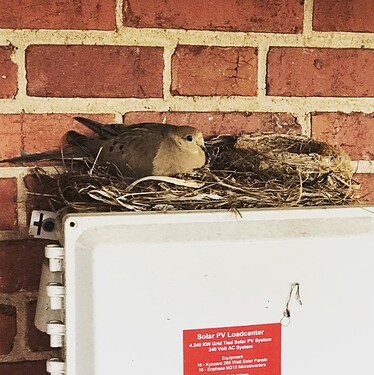Migratory warblers have been passing through the woods where I live in Baltimore, and I’ve gotten caught up in the excitement of finding and identifying the many species coming through over the last couple of weeks. It turns out that many migratory birds travel not only thousands, but even tens of thousands of miles over the course of a single year.
Think of all the bad design – border walls and all – anchored in the idea that being fixed in a place of your own is the most natural and normal thing. What would happen if we really let ourselves ease into a space for more radical imagination of migration and belonging, the possibility of being and belonging along such a vast range of home and habitat?
Especially given that our designs are so deadly for such creatures. Each year, for example, literally billions of birds are killed by collisions with the glass facades and other architecture of our modern lives.
As we begin to hear more and more about life-centered design, drawing on biomimicry and inspired by endeavors like AskNature.org, I am wondering what something like bird-centered design could mean. The question is inspired in part by this excellent reflection on bee-centered design. But also by the question of how it might matter that we endeavor to rethink design with one life form, as opposed to another.
Lately I’ve been reading A World on the Wing by Scott Weidensaul, and here’s one pretty mind-blowing paragraph.
“Migratory birds can grow and jettison their internal organs on an as-needed basis, bolster their flight performance by juicing on naturally occurring performance-enhancing drugs, and enjoy perfect health despite seasonally exhibiting all the signs of morbid obesity, diabetes, and looming heart disease. A migrating bird can put alternating halves of its brain to sleep while flying for days, weeks, or even months on end, and when forced to remain fully awake has evolved defenses against the effects of sleep deprivation; in fact, birds actually seem to get sharper under such conditions, the envy of any human slogging through the day after a poor night’s sleep. If all that isn’t sci-fi enough, we now know that they navigate using a form of quantum mechanics that made even Einstein queasy.”
Ecological design is an invitation to think against the presumption of human mastery, human ingenuity, the idea that the greatest plasticity of form and possibility is born of our unique genius. But it strikes me that there’s a lot at stake in what creatures – and resulting life circumstances – we might begin to think with instead. How amazing is that avian plasticity? What could it mean to fold such radical plasticity and adaptability into our sense of what is possible in our all-too-human (but never only human) worlds?
Tim Beatley recently suggested that “Every design and building project in the city should be seen as the chance to make room for other species of life, especially birds. Habitats that will be good for birds will be good for humans as well.”
As we take on this challenge, we can acknowledge that signs of avian ingenuity are all around. For the last several years, for example, a pair of mourning doves has returned to our small Baltimore city backyard year after year to nest and raise new broods on top of the electrical box for our rooftop solar panels. We get some serious stink-eye from those doves every time we dare set foot out the back door nearby, as if the space, indeed, is theirs. Two more little doves fledged and left the nest just yesterday. Their parents will be back again, no doubt.
I don’t know yet where one might go with an idea like bird-centered design. But it’s something I keep thinking about as I also crane my neck and head up into the canopies of the high trees near my house, hearing the sound of warblers and other avian migrants, wondering what these spaces look and feel like to them, wondering what it could mean to see these places and their possible futures anew through their experience.
